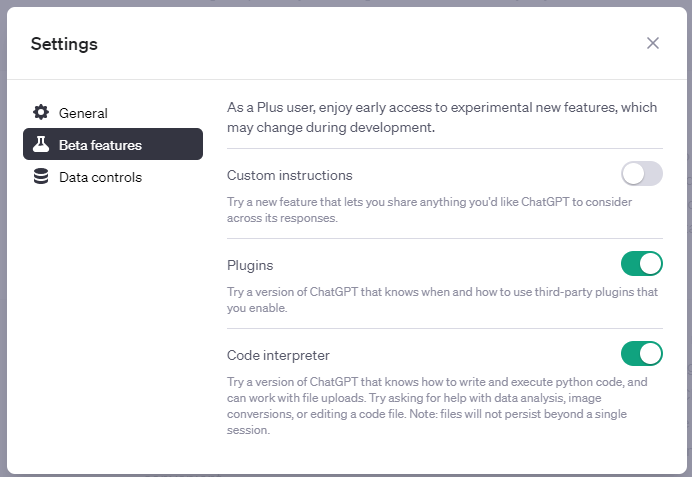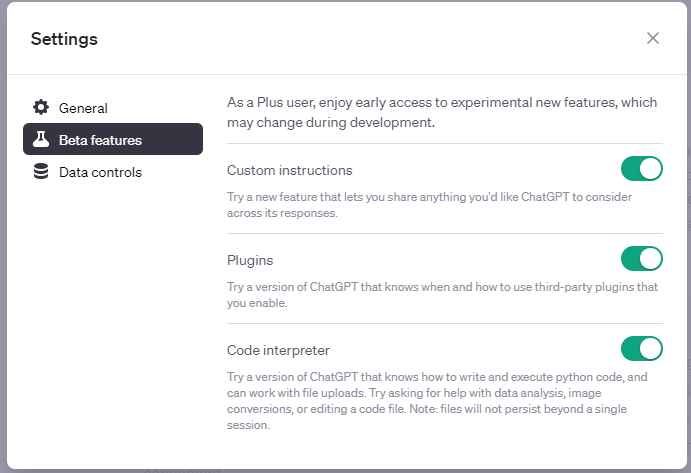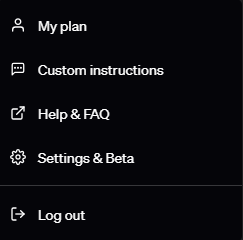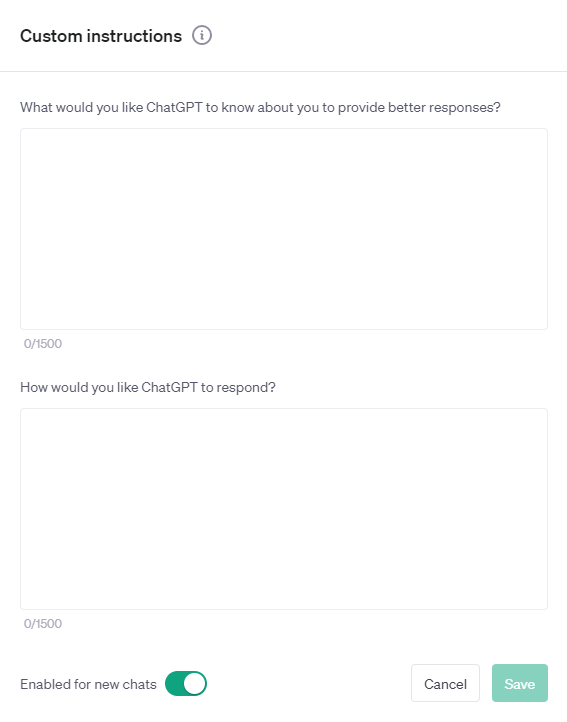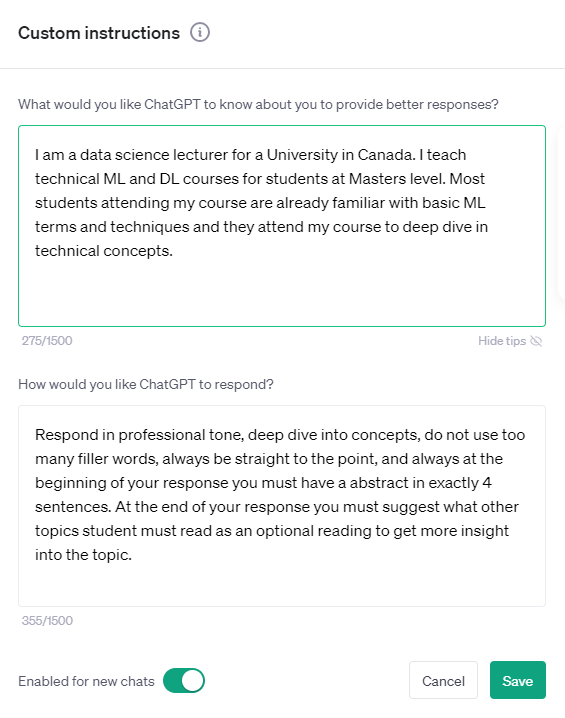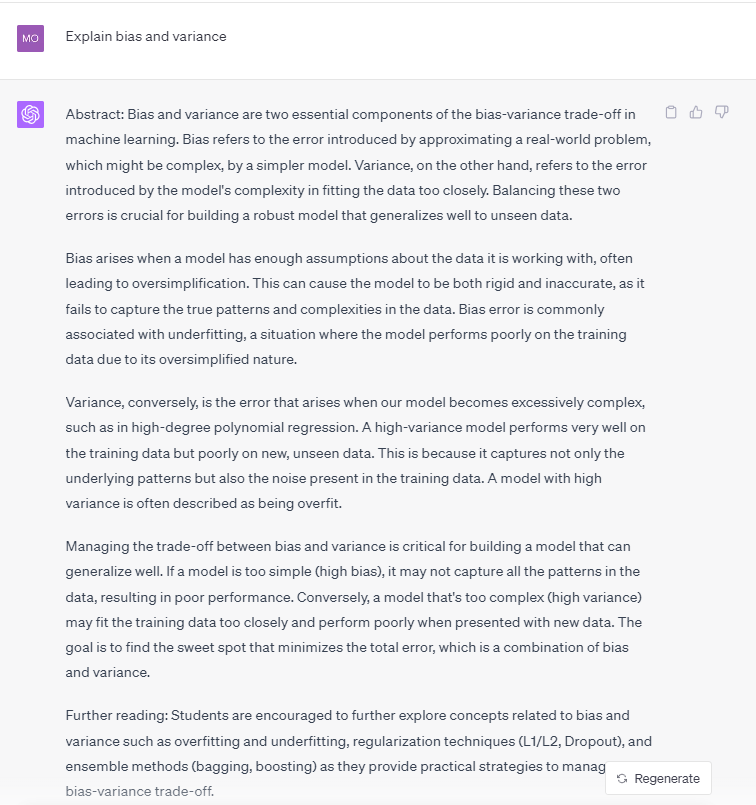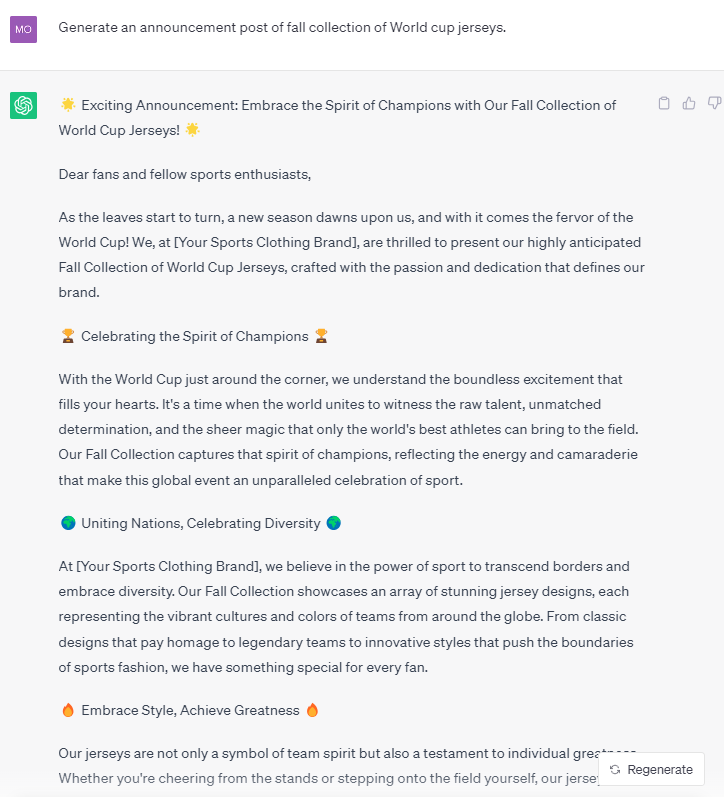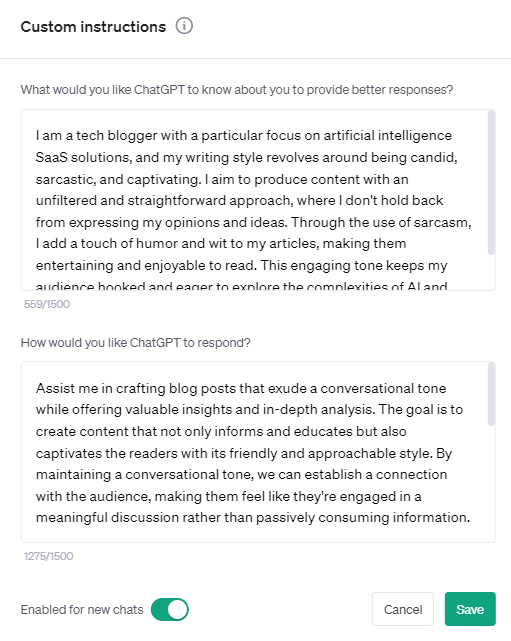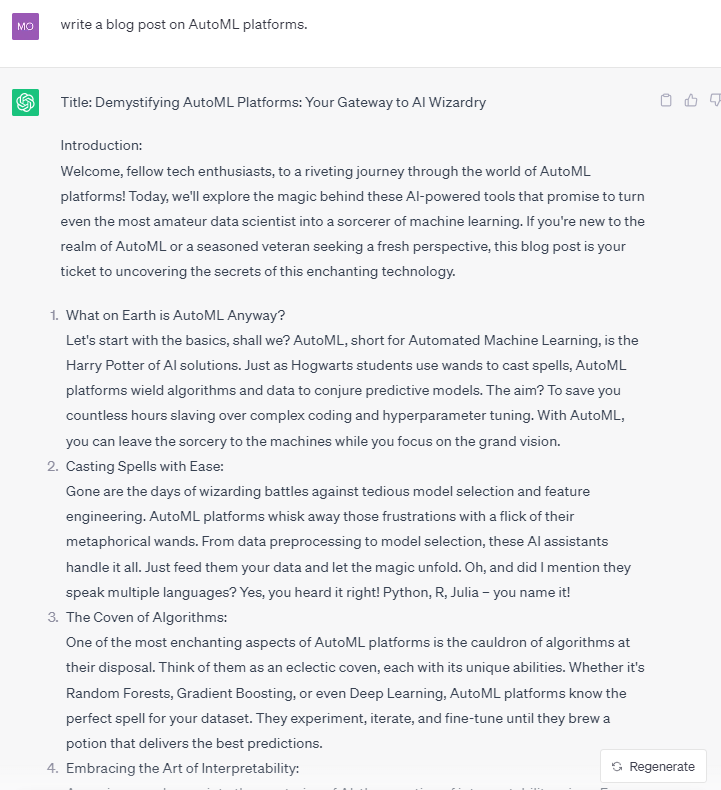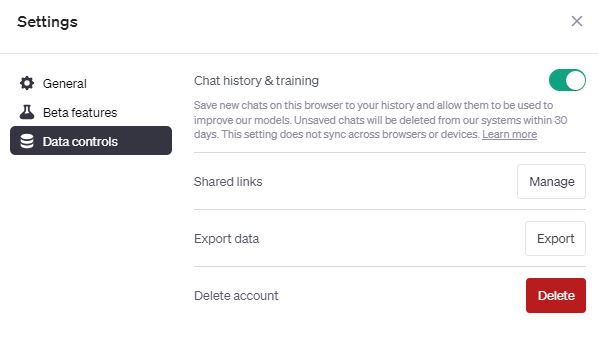Course
How to Use ChatGPT Custom Instructions
Explore ChatGPT Custom Instructions feature. Learn how to fine-tune responses, explore use cases for teachers, entrepreneurs, and content creators.
Aug 2023 · 7 min read
Learn topics mentioned in this tutorial!
1 hr
192.3K
Course
Generative AI Concepts
2 hr
24.2K
Track
AI Fundamentals
10hrs hr
See More
RelatedSee MoreSee More
blog
7 Artificial Intelligence (AI) Jobs You Can Pursue in 2024
Explore the top 7 AI careers in 2024, from cutting-edge research to hands-on engineering.
Nahla Davies
15 min
podcast
Data & AI Trends in 2024, with Tom Tunguz, General Partner at Theory Ventures
Richie and Tom explore trends in generative AI, the impact of AI on professional fields, cloud+local hybrid workflows, data security, the future of business intelligence and data analytics, the challenges and opportunities surrounding AI in the corporate sector and much more.
Richie Cotton
38 min
cheat sheet
LaTeX Cheat Sheet
Learn everything you need to know about LaTeX in this convenient cheat sheet!
Richie Cotton
tutorial
Reinforcement Learning: An Introduction With Python Examples
Learn the fundamentals of reinforcement learning through the analogy of a cat learning to use a scratch post.
Bex Tuychiev
14 min
tutorial
Run LLMs Locally: 7 Simple Methods
Run LLMs locally (Windows, macOS, Linux) by leveraging these easy-to-use LLM frameworks: GPT4All, LM Studio, Jan, llama.cpp, llamafile, Ollama, and NextChat.
Abid Ali Awan
14 min
code-along
Getting Started with Machine Learning Using ChatGPT
In this session Francesca Donadoni, a Curriculum Manager at DataCamp, shows you how to make use of ChatGPT to implement a simple machine learning workflow.
Francesca Donadoni
